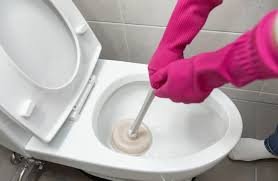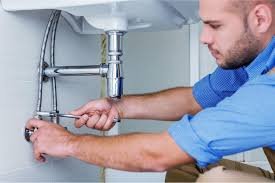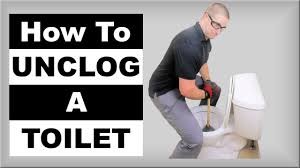Clogged toilets are a common household problem, and while they may seem like an emergency situation, with the right tools and a bit of know-how, you can tackle this issue efficiently. If you’ve ever wondered how to unclog a toilet, this guide will walk you through everything you need to know to restore your bathroom to its optimal state.
Table of Contents
Understanding Toilet Clogs: Why Do They Happen?
Before diving into the various methods of how to unclog a toilet, it’s important to understand why toilets get clogged in the first place. A clog typically occurs when there is a blockage in the toilet’s drainpipe, preventing waste and water from flowing freely. Common causes of toilet clogs include:
- Excessive Toilet Paper: Too much toilet paper can easily clog a toilet, especially if the water pressure is low.
- Non-Flushable Items: Items like wipes, feminine hygiene products, cotton balls, or paper towels can cause serious blockages.
- Inadequate Drainage: Older toilets or toilets with design flaws may struggle to move waste through the pipes, leading to frequent clogs.
- Children’s Toys: Little ones may flush toys or other small objects, which can easily cause a blockage.
Understanding these causes can help you avoid future clogs. But if you’re currently facing a clogged toilet, don’t panic – read on to learn how to unclog a toilet effectively.
The Most Common Tools You’ll Need to Unclog a Toilet

When learning how to unclog a toilet, there are a few essential tools that will make the job much easier. Having the right tools on hand will help you clear the blockage quickly and efficiently:
- Plunger: A toilet plunger is one of the most common tools used to clear clogs. Make sure to choose a plunger specifically designed for toilets, as these have a flanged end for a better seal.
- Plumbing Snake (Auger): A plumbing snake is a long, flexible tool that can help break up stubborn clogs deep in the drainpipe.
- Dish Soap and Hot Water: In some cases, pouring dish soap and hot water into the toilet can help loosen a clog.
- Rubber Gloves: Always wear gloves when dealing with clogged toilets for hygiene reasons.
How to Unclog a Toilet Using a Plunger
The plunger is often the first tool you’ll reach for when trying to figure out how to unclog a toilet. Here’s a step-by-step guide to using a plunger:
- Ensure You Have the Right Type of Plunger: Make sure the plunger has a flange (a rubber extension) designed for toilets, not the flat ones typically used for sinks.
- Position the Plunger Correctly: Insert the plunger into the toilet bowl, ensuring that the flange is fully submerged in water and the cup covers the drain.
- Create a Seal: Press down gently at first to create a seal between the plunger and the toilet drain.
- Plunge Up and Down: Using a firm but controlled motion, push the plunger up and down several times. Avoid lifting it out of the water to maintain suction.
- Test the Flush: After about 15-20 plunges, try flushing the toilet to see if the clog has cleared. If the water drains normally, the job is done!
If the clog doesn’t clear after a few attempts, you may need to try another method, such as using a plumbing snake.
How to Use a Plumbing Snake (Toilet Auger)
If plunging doesn’t work, a plumbing snake can be a great tool for clearing deeper clogs. The auger is a long, flexible tool designed to reach clogs deep in the drainpipe. Here’s how to use it effectively:
- Insert the Auger: Insert the auger into the toilet bowl and push it down into the drain.
- Turn the Handle: Turn the handle to feed the auger further into the drain. You’ll feel resistance when you hit the clog.
- Break Up the Clog: Continue turning the handle to either break up the clog or hook onto it, allowing you to pull it out.
- Remove the Snake: Once you’ve either broken up or pulled out the clog, remove the auger carefully from the toilet.
- Test the Flush Again: Flush the toilet to make sure the blockage is cleared. If the water drains freely, you’ve successfully unclogged the toilet.
How to Unclog a Toilet with Dish Soap and Hot Water
Sometimes, you don’t need any fancy tools to clear a clog. Using dish soap and hot water is a simple method that can help loosen stubborn blockages. Here’s how you can try this method:
- Add Dish Soap: Pour about a cup of dish soap into the toilet bowl. Let it sit for 10-15 minutes to lubricate the pipes.
- Boil Water: While the soap is sitting, heat a gallon of water to just below boiling point. Be careful not to use water that’s too hot, as it can crack the porcelain.
- Pour the Water Into the Toilet: Slowly pour the hot water into the toilet from waist height. The force of the water combined with the soap may help break up the clog.
- Wait and Flush: Let the mixture sit for another 10 minutes, then flush the toilet to see if the water drains properly.
This method works well for mild clogs but may not be effective for more severe blockages.
When to Call a Professional Plumber

While knowing how to unclog a toilet is a valuable skill, there are times when it’s best to call in a professional. Here are a few signs that it may be time to get help:
- Repeated Clogs: If your toilet continues to clog despite your best efforts, it could indicate a larger issue with your plumbing system.
- Sewage Backup: If you notice sewage backup in other drains (such as sinks or bathtubs), this is a sign of a more serious blockage in your sewer line.
- Unusual Sounds or Smells: If you hear gurgling sounds or notice unpleasant odors coming from the toilet, it might mean that the blockage is too deep for you to reach on your own.
- Lack of Improvement: If none of the methods you’ve tried have worked, it may be time to call a professional plumber who can address the underlying issue.
Preventing Future Toilet Clogs
Now that you know how to unclog a toilet, it’s also important to take steps to prevent future blockages. Here are a few tips to help you avoid clogs in the future:
- Don’t Flush Non-Flushable Items: Items such as wipes, cotton balls, and hygiene products should never be flushed down the toilet. Dispose of them in the trash instead.
- Use Toilet Paper Wisely: Be mindful of how much toilet paper you use. Excessive toilet paper can cause clogs, especially in older toilets with lower water pressure.
- Regular Maintenance: To prevent clogs from becoming serious, consider scheduling routine plumbing maintenance. A professional plumber can inspect your pipes and address any potential issues before they become a problem.
Also read Fairy Lights A Guide to Enchanting Illumination
Conclusion
Learning how to unclog a toilet is a useful skill that can save you time, money, and frustration. Whether you’re using a plunger, plumbing snake, or dish soap and hot water, there are several methods available to tackle the issue. For mild clogs, a plunger or household items may suffice. However, for more stubborn blockages, a plumbing snake or professional help may be necessary. By understanding the causes of toilet clogs and taking preventive measures, you can avoid this common bathroom issue in the future.
With the right tools, a little patience, and some know-how, you’ll be able to handle most toilet clogs without hassle.


